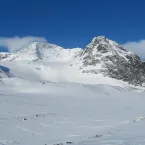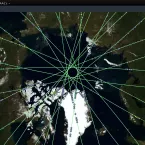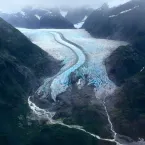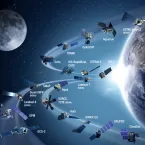Our Research
As climate changes, how do Earth's frozen areas affect our planet and impact society?
In this section
Related News & Stories
Filter by:

News Release
Scientific researchers have made leaps and bounds in recent years gathering new data and insights on these regions, but there has been a lag in curriculum development for undergraduate students who are studying the geosciences and environmental sciences. Polar Places and Spaces (PolarPASS) seeks to fill this gap by developing a science-based curriculum to help students learn about the scientific discovery process and to connect them with far-away places that they may not have the opportunity to visit in person.

Spotlight
NASA’s OpenAltimetry tool allows experienced and new users alike to quickly find and download elevation data through a web browser without the need for costly software or hefty computational resources.

Spotlight
Several representatives from NSIDC will be attending the American Geophysical Union (AGU) Annual Meeting 2023 to share their expertise and connect with Earth Science experts. We've compiled a list of all sessions in which NSIDC staff are involved, including presentations, posters, workshops and other discussions.

Spotlight
Melting glaciers and ice sheets are already the biggest contributors to global sea level rise. Yet, of the approximately 200,000 glaciers in the world currently, no database exists to identify which glaciers have disappeared, and when. The Global Land Ice Measurements from Space (GLIMS) initiative, an international project designed to monitor the world's glaciers primarily using data from optical satellite instruments, aims to change that.

Spotlight
In 1993, NASA contracted the National Snow and Ice Data Center (NSIDC) at the University of Colorado Boulder to steward snow- and ice-related data, forming the NSIDC DAAC. The year 2023 marks 30 years that NSIDC has operated the NASA snow and ice DAAC.

Ice Sheet Analysis
NSIDC has launched an upgraded and streamlined Ice Sheets Today website. The new site replaces the site previously known as Greenland Today and Antarctica Today. Ice Sheets Today offers easy access to melt statistics and scientific analysis of ice sheet conditions.